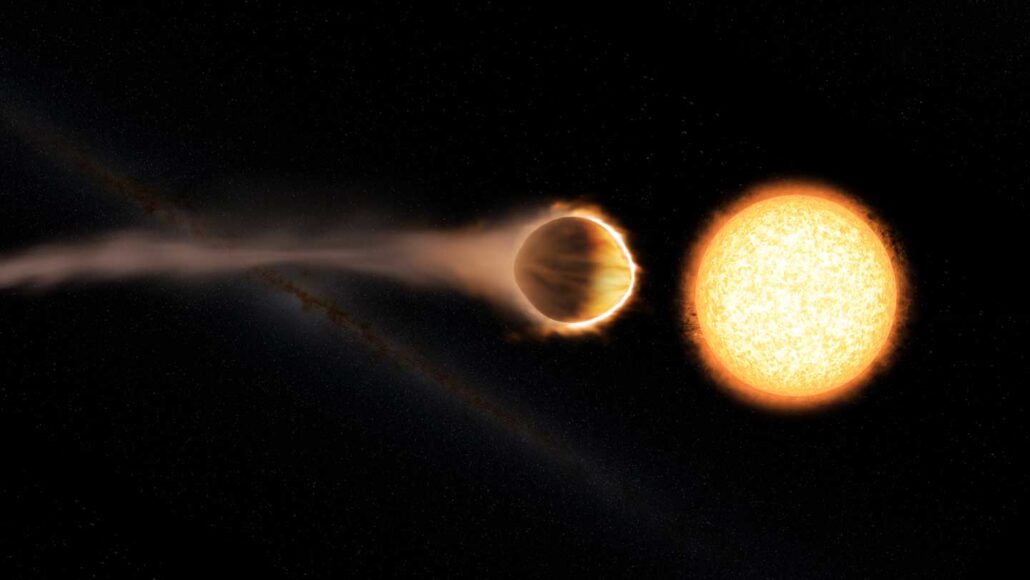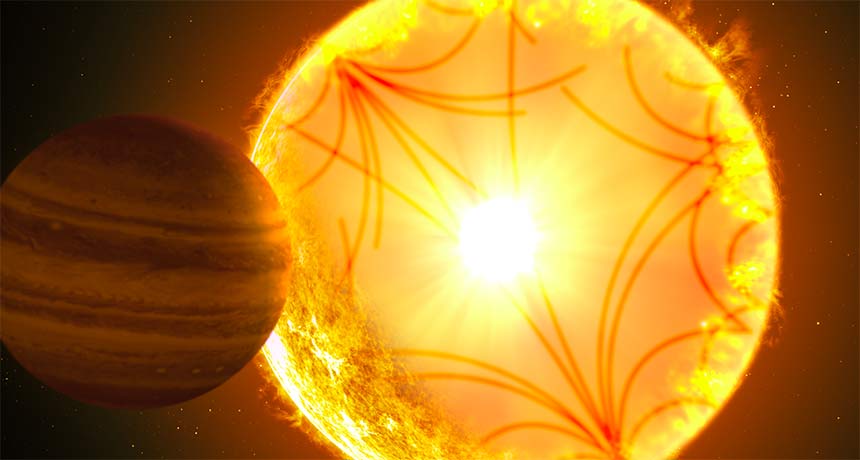Every year, the planet inches closer to its star

Like the giant planet illustrated here, the planet Kepler 1658b is on a slow death spiral into its sun.
The first planet ever spotted by the Kepler space telescope is falling into its star.
Kepler launched in 2009 on a mission to find exoplanets by watching them cross in front of their stars. The first potential planet the telescope spotted was initially dismissed as a false alarm, but in 2019 astronomer Ashley Chontos and colleagues proved it was real (SN: 3/5/19). The planet was officially named Kepler 1658b.
Now, Chontos and others have determined Kepler 1658b’s fate. “It is tragically spiraling into its host star,” says Chontos, now at Princeton University. The planet has roughly 2.5 million years left before it faces a fiery death. “It will ultimately end up being engulfed. Death by star.”
The roughly Jupiter-sized planet is searingly hot, orbiting its star once every three days. In follow-up observations from 2019 to 2022, the planet kept transiting the star earlier than expected.
Combined data from Kepler and other telescopes show that the planet is inching closer to the star, Chontos and colleagues report December 19 in the Astrophysical Journal Letters.
“You can see the interval between the transits is shrinking, really slowly but really consistently, at a rate of 131 milliseconds per year,” says astrophysicist Shreyas Vissapragada of the Harvard-Smithsonian Center for Astrophysics in Cambridge, Mass.
That doesn’t sound like much. But if this trend continues, the planet has only 2 million or 3 million years left to live. “For something that’s been around for 2 to 3 billion years, that’s pretty short,” Vissapragada says. If the planet’s lifetime was a more human 100 years, it would have a little more than a month left.
Studying Kepler 1658b as it dies will help explain the life cycles of similar planets. “Learning something about the actual physics of how orbits shrink over time, we can get a better handle on the fates of all of these planets,” Vissapragada says.

source: https://www.sciencenews.org/








